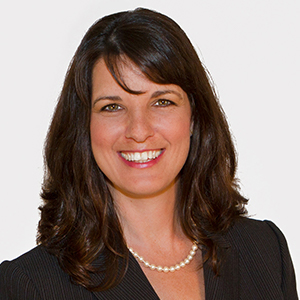Fundraising is essential for any new nonprofit. That’s how you get the funding you will need to accomplish your mission and operate your program. All fundraising starts with a well-thought-out message. It would be best if you first started with your mission and then your vision. Crafting them allows your organization to continue growing with a connected and shared goal. Getting the Board involved with fundraising is another essential task that will push your fundraising efforts forward. To accomplish all this, we’ll outline the first steps and give you a rough outline of how to be successful in fundraising.
How to Craft Your Fundraising Message
What do you envision for the future? If your organization is fulfilling its mission completely, and you want to start crafting your message, you want to begin by stating the problem. What is the problem your nonprofit is addressing and trying to resolve? What are you trying to do to change the world in some special way that’s unique and that caused the need for your nonprofit?
You want to make that problem statement relevant to the donor and ensure it evokes emotion. So, many nonprofits want to say what they do but forget to speak to the donor in terms that are meaningful to them. Why should it matter to the donor? That’s an important part of putting your problem statement forward.
Next, you want to explain your unique solution. How do you propose to resolve the problem and then, if you’ve been active for some time, you should have some stories and statistics that you can use to demonstrate your effectiveness in applying that unique solution. If you haven’t, you’ll talk about how your unique solution will be effective and why. It is better to continue refining that over time as you put your work into action and start to have stories and statistics behind it.
Next, give the donor or potential donor a call to action. What do you want a prospective donor to do? Do you want them to give money, volunteer, provide you with an in-kind donation, or serve on your Board? You must define that clearly and provide them with a call to action. These types of communications can happen either in person or virtually, but make sure you have some materials for them to review, so they can think about what you’re talking to them about in their own time. Begin to think about what kinds of questions they might have. You will need some leave-behind materials if you’re in person, or something that you can email to them, and these materials should also be available on your website as well.
What do you do with all of this? How do you use this information to begin to fundraise? First, you might have some early donors, some people you’ve talked to about your vision and your new nonprofit, who are really interested and have the means to help you. That’s great. Those early donors could make an investment to help you get started. If you don’t have any early donors, your Board will be important here.
Getting a Board Involved with Fundraising
The Board is always important in fundraising, but in early-stage nonprofits, who you choose as Board members is critical. You want people who you trust and believe in your mission. They need to be passionate about what you want to accomplish and how you’re going to do it, and they’ll help you out in some manner. Sometimes you’ll choose Board members with lots of expertise, but maybe not as much financial wherewithal. It is important that you set the tone at the very beginning of your nonprofit that every Board member, despite their capacity to give, must participate as a donor and a fundraiser.
What does that mean? You need 100% participation. Every Board member should give from their own finances and find a way to support the fundraising effort. A donor doesn’t necessarily have to provide a minimum amount. You may have people with great capacity and other with much smaller capacity, and they may be very valuable Board members. You want really good dialogue about fundraising in the Board’s role. But number one is the expectation that 100% of the Board members will participate as donors and fundraisers.
So, what are some things that Board members can do? The simplest thing is to take your messaging, the materials and unique messages you put together, and give them to every Board member. Then, talk them through the materials. After that, you might provide them with Board training exercises to help them hone their unique delivery of the message and engage them in fundraising one-on-one. You can set a goal for your Board members that each one of them will solicit and secure a certain number of donations. You can make that goal a monthly donor challenge or a one-time donor challenge.
For example, if you have a Board that doesn’t have many high-net-worth connections, you may want to start small. This is very common. We see this quite often in our consulting. Small nonprofits have Board members that don’t have great capacity themselves or great connections to high-net-worth individuals. So, they start very small. You can ask everybody to seek out 100 donors per month, which is $1,200 per Board member. If they can bring in $1,200 each, and you have three Board members, that would be $3,600. If you have five Board members, that will be $6,000. If you have ten Board members, that will be $12,000. You can see how increasing the number of Board members helping you will improve your fundraising success.
Let’s say you challenge every Board member to bring in a thousand dollars. You have ten Board members, and the ask is $1,000. That’s $10,000 for you to start with. Now, if you have Board members that have higher capacity, then perhaps the ask is for $10,000, and if ten Board members bring in $10,000, that would be one hundred thousand dollars to work with! Again, if it’s a very small nonprofit and the Board members don’t have that kind of reach, then perhaps you want to have them start with a hundred dollars and get them excited about the fact that they’re able to do this.
There are many ways to handle this, but the key is to have them think about their responsibility as a Board member and start being creative. Ask questions like, “how am I going to raise this money?” In addition, you can also set up some small fundraising activities and events that Board members can participate in.
Events and Other Useful Fundraising Tactics
Think about activities like yard sales or car washes. They can create community awareness while raising funds. They can help you connect with new people and let them know that your organization exists, and you can bring them materials and handouts and have volunteers talk about the organization. It’s important that they tell people about the organization while they’re at the activity because then you get the double benefit of raising community awareness while raising funds.
You might consider starting with some larger fundraising events. If your Board has connections, then perhaps you can have them each sponsor a table at a larger fundraising event. Perhaps breakfast or lunch, a gala, or a golf or tennis tournament. Have your Board members get sponsorships, fill tables, or sign up for some foursomes. That way, you can start to connect with new potential supporters who attend your event.
Finally, think about small capacity-building grants that even a smaller nonprofit startup would be eligible for. Typically, you must be in operation for a year to qualify for these, but they’re great for helping you establish some of the things you need to in the early days of your nonprofit.
In order for any nonprofit organization to be successful, they need to be proficient in fundraising. To accomplish this early on, a nonprofit must have a genuine message and an active Board. From there, utilizing the right tactics and strategies will push your mission forward. We hope this article could provide you with a few ideas on how to get your nonprofit fundraising started when your nonprofit is new, and in its earliest stages.





